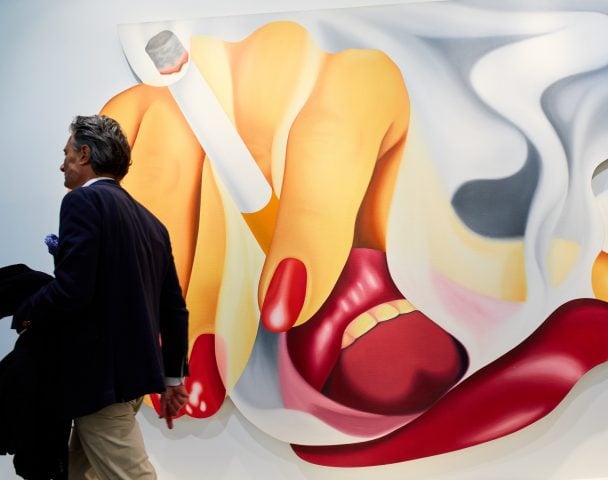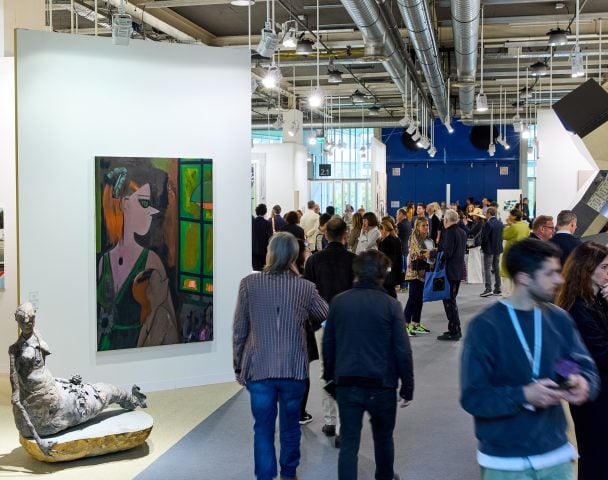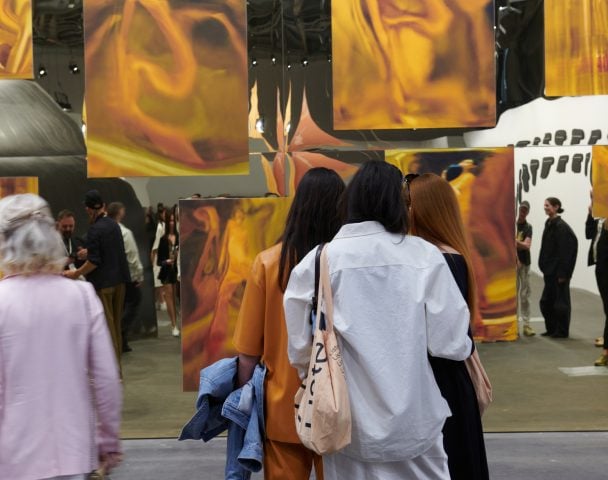Archaeology & History
The Hunt: How Frida Kahlo’s Final Painting Vanished Into Storage
Kahlo's painting traveled from Mexico City to Moscow and Warsaw, where it ultimately disappeared without a trace.
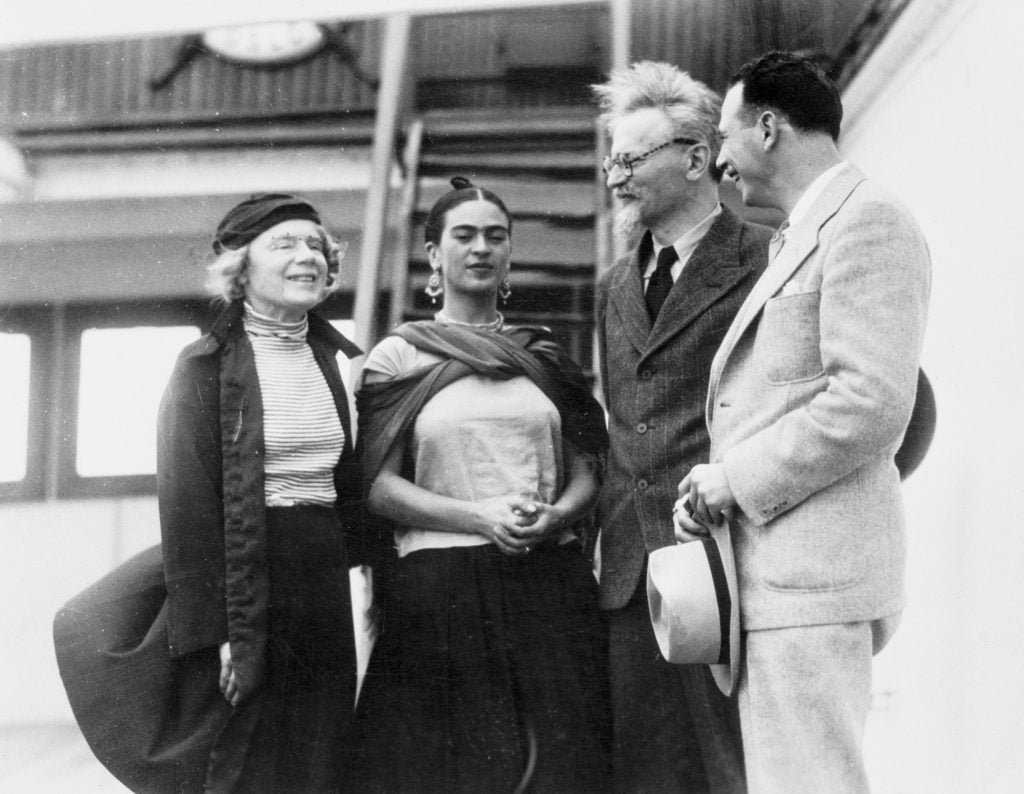
Mexican painter Frida Kahlo began work on The Wounded Table in late 1939, around the time she (temporarily) ended her relationship with fellow artist Diego Rivera. Called La Mesa Herida in Spanish, the eight-by-four-foot canvas—an unusually large size for Kahlo, who in contrast to her husband’s sprawling murals preferred to work in a smaller format—depicts the artist seated at a table that has human legs, surrounded by two children (her sister Cristina’s), a papier-mâché skeleton, a pre-Columbian figurine, and her pet deer Granizo.
The painting is typically interpreted as a representation of the despair, frustration, and betrayal Kahlo experienced during her divorce from Rivera. (“I simply wanted to be free to carry on with any woman who caught my fancy,” he later said. “Was I simply the depraved victim of my own appetites?”) With a composition that mirrors that of Leonardo da Vinci’s The Last Supper, it made its debut at the 1940 Exposición Internacional del Surrealismo in Mexico City, alongside The Persistence of Memory (1931) by Salvador Dalí and The Treachery of Images (1929) by René Magritte.
The Wounded Table was exhibited at a number of museums and galleries before Kahlo made the decision in 1943 to donate her work to the government of the Soviet Union in an attempt to restore her relationship with the Communist Party. Kahlo was a staunch socialist, but her ties with Moscow had suffered as a result of her contact with Leon Trotsky, whom she befriended after the exiled revolutionary settled in Mexico a decade earlier.
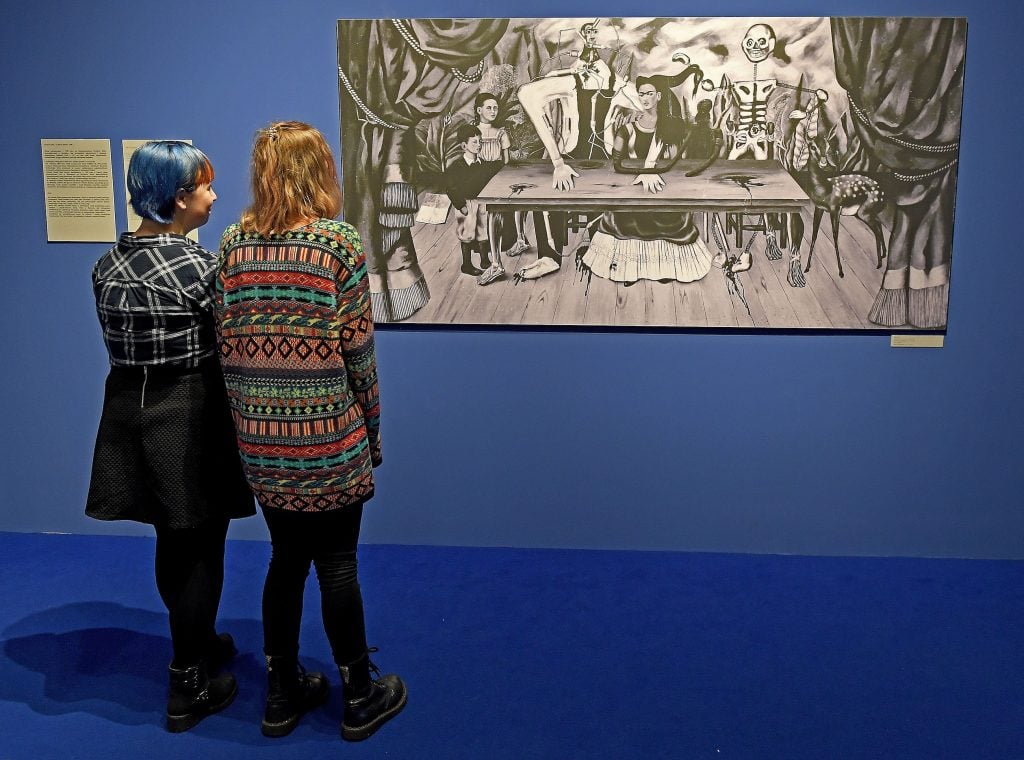
Visitors look at a reproduction of The Wounded Table by Frida Kahlo during a 2017 exhibition on Kahlo and Diego Rivera at the ZAMEK Culture Centre in Poznan, Poland. Photo: AFP/Janek Skarzynski.
Although the USSR accepted her gesture, ideological shifts in the Communist Party ultimately prevented her work from going on display. “It is necessary to bear in mind that we are interested in the works of the realist movement,” a Soviet official informed his Mexico-based colleagues in a 1948 letter. Kahlo’s Surrealist style was “alien to the principles of Soviet Realist art,” and therefore “the possibility of displaying such artworks in the Soviet Union is excluded.”
Another letter informed Mexico City that The Wounded Table was going to be removed from its stretcher and sent to the Pushkin State Museum of Fine Arts for storage. Here, it would have remained were it not for Rivera, who, according to an article by art historians Helga Prignitz-Poda and Katarina Lopatkina, convinced the Soviets to show the painting at a 1955 exhibition in Warsaw, Poland.
The show, which took place a year after Kahlo’s death at the age of 47, marked the last time The Wounded Table was seen in public. (In 2017, a black-and-white replica of the work went on view in a Polish group show in an effort to locate it.) Despite consulting an extensive list of Mexican, Polish, and Russian sources, Prignitz-Poda and Lopatkina were unable to locate the canvas. “As we now know that Moscow did not really esteem the gift of Frida Kahlo’s painting, and found it not worth exhibiting and too expensive to transport,” they concluded, “it is quite likely that after Warsaw it was not even sent back to Moscow, but remained in Poland.”
Despite its storied past, the fate of The Wounded Table is not unique. Of the 300 or so works produced by Kahlo during her short life, more than half are either missing, confirmed to have been destroyed, or in the hands of private parties that refuse to loan them to exhibitions.
The Hunt explores art and ancient relics that are—alas!—lost to time. From the Ark of the Covenant to Cleopatra’s tomb, these legendary treasures have long captured the imaginations of historians and archaeologists, even if they remain buried under layers of sand, stone, and history.
Follow Artnet News on Facebook:
Want to stay ahead of the art world? Subscribe to our newsletter to get the breaking news, eye-opening interviews, and incisive critical takes that drive the conversation forward.


